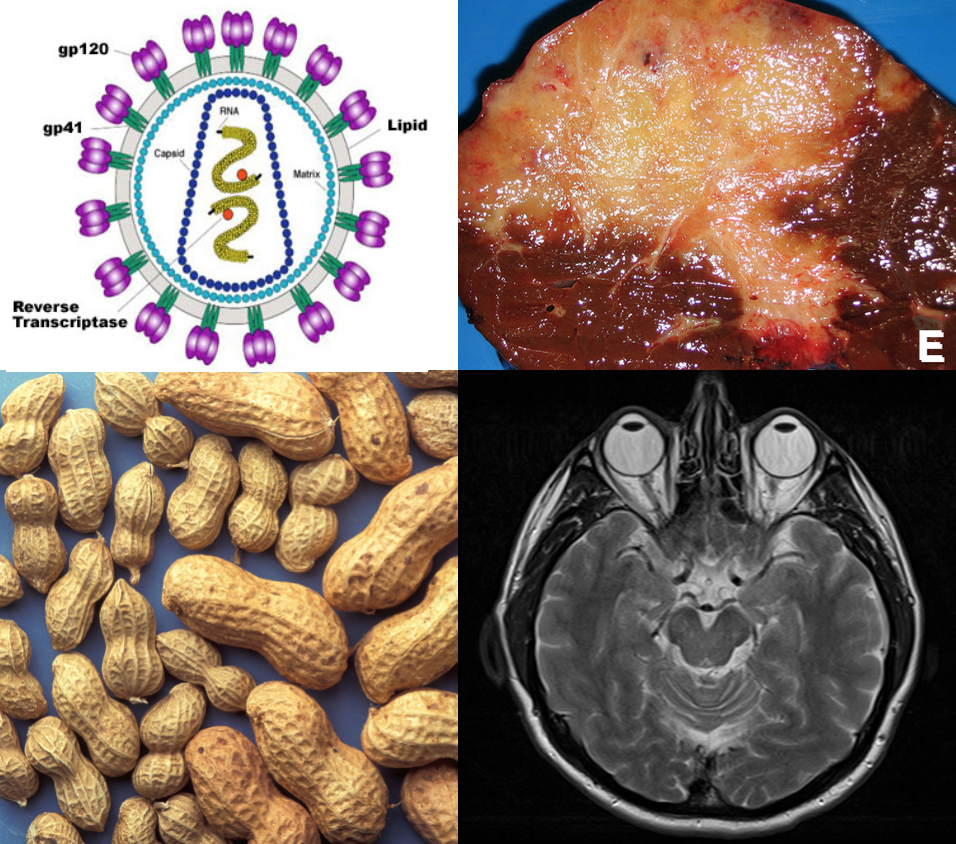The medical research community has converged on the coronavirus in an unprecedented way, and for good reason. But with the focus of the media and medical news outlets squarely on one virus, surely there have been other medical innovations and breakthroughs this year? Here are some new therapies and technologies that have emerged since the start of 2020.
Pemigatinib, a new targeted chemotherapy for cholangiocarcinoma
Cholangiocarcinomas are horrible tumors. Most are difficult or impossible to resect and are fatal if not resected. To make matters worse, the only chemotherapeutic drugs available to treat the tumors were metabolic agents such as fluorouracil or gemcitabine [1]. That is, until pemigatinib. The FDA approved the targeted chemotherapy agent in April under its accelerated approval process [2]. Pemigatinib is now an orphan medication, since it is the only targeted intervention for cholangiocarcinoma. The drug functions as an FGFR1, 2, and 3 inhibitor, making it effective for cholangiocarcinomas with FGFR2 fusions or rearrangements. The single-arm phase II trial that propelled pemigatinib into accelerated approval included 146 patients, 107 of them with FGFR2 fusions or rearrangements. Of these 107 participants, 35.5% experienced an objective response, while none of the other patients experienced a response. Additionally, only 14.9% of the patients with FGFR2 fusion or rearrangement had progressive disease, compared to 35% of the “other FGF/FGFR mutation” group and 61.1% of the “no FGF/FGFR mutation” group [3]. Pemigatinib also had a demonstrable positive effect on short term survival. This therapy will be limited to only a subset of patients with cholangiocarcinomas, as only an estimated 7.7% of these tumors have an FGFR2 fusion [4], but it will surely make a difference for many patients.
Second patient with HIV cured
It has been more than 10 years since the “Berlin patient” was announced as the first patient with HIV to be cured. Not just in remission, but without a measurable viral load! Now the Berlin patient has a compatriot in the “London patient”, whose case was published this year in the Lancet HIV. Like the Berlin patient, the London patient received an allogeneic stem cell transplant with donor cells that do not express CCR5 (CCR5Δ32/Δ32). This was combined with total body irradiation as treatment of acute myelogenous leukemia [5]. As of the publication of their case report in March, they had been free of measurable HIV in semen and plasma for 30 months. These viral tests have incredibly high sensitivity, with the lowest observable limit of 1 virus copy per mL in plasma and 12 copies per mL in seminal fluid. The London patient’s CD4+ T-cell count has been slow to rise to pretransplant levels. Despite levels of 430 cells per µL, the patient has not had opportunistic infections. An increased EBV titer was observed but this was asymptomatic. Additionally, the patient has not experienced symptoms of graft versus host disease after 6-months post-transplant! Stem cell transplantation with CCR5-negative cells is not quite a targeted immunotherapy for HIV eradication, but the Berlin and London patients show how promising targeted gene-therapy may be for patients with HIV.
New Immunotherapy to Treat Peanut Allergies
Immunotherapy has been used for years by allergy specialists to treat severe peanut allergies. Slowly increasing exposure to peanut protein can desensitize a body’s IgE reaction. At the beginning of this year, the FDA approved the first therapy that can be used mostly at home for ameliorating peanut allergies. Palforzia, also known as AR101, is a peanut allergen powder that is taken with semi-solid food such as yogurt or applesauce. The initial dose escalation phase is performed in a physician’s office to ensure that there is no severe reaction in the first exposure. This is followed by a progressive up-dosing phase. Treatment is completed by a maintenance phase with 300mg for approximately 6 months [6].
FDA approval was earned after two phase III trials demonstrated superiority in tolerance of a 600mg peanut protein challenge as an endpoint for the AR101 treatment group compared to the control [7]. The success of treatment was measured by the decreased severity of reaction to peanuts. More than 95% of both the treatment and control groups experienced either a mild, moderate, or severe reaction to the peanut protein load [8]. So caution should still be taken; Palforzia is far from a certain cure for peanut allergies. People with peanut allergies shouldn’t munch on trail mix after completing therapy, but they would likely be safer in the case of an accidental peanut exposure.
New Portable MRI Machines for Head Scans
For a while, the spotlight of point of care imaging has been squarely on ultrasound. But imagine being able to get an MRI in the emergency department without even leaving your hospital bed! The FDA approved a bedside portable MRI machine in February that could do just that [9]. This MRI machine the size of a side-table can be set adjacent to hospital beds, take a head scan, and send the results to an iPad. At $50,000, it is 5% the cost of a regular MRI machine and uses 35 times less power [10]. The magnet is 0.064 T, which is significantly weaker than the regular 1.5 or 3.0 T magnets used in full-body MRI machines. For this magnet to still produce an image, the software will compensate through signal processing techniques. Nevertheless, the images produced by the machine will certainly have lower resolution than full scans. But the possibilities of point of care head scans in an emergency or out of hospital setting can be a game-changer for the evaluation of head pathology. Perhaps additional development of this technology can lead to point of care MRI for limbs and the rest of the body!
[1] Anderson CD and Stuart KE. Treatment of localized cholangiocarcinoma: Adjuvant and neoadjuvant therapy and prognosis. UpToDate. Accessed May 9, 2020 from https://www.uptodate.com/contents/treatment-of-localized-cholangiocarcinoma-adjuvant-and-neoadjuvant-therapy-and-prognosis.
[2] FDA grants accelerated approval to pemigatinib for cholangiocarcinoma with an FGFR2 rearrangement or fusion. FDA. Accessed May 9, 2020 from https://www.fda.gov/drugs/resources-information-approved-drugs/fda-grants-accelerated-approval-pemigatinib-cholangiocarcinoma-fgfr2-rearrangement-or-fusion.
[3] Abou-Alfa GK, Sahai V, Hollebecque A, et al. Pemigatinib for previously treated, locally advanced or metastatic cholangiocarcinoma: a multicentre, open-label, phase 2 study. Lancet Oncol. 2020;21(5):671‐684. doi:10.1016/S1470-2045(20)30109-1.
[4] Kuznar, W. FGFR2 Emerges as a Promising Target in Cholangiocarcinoma. Targeted Oncology. Accessed May 9, 2020 from https://www.targetedonc.com/view/fgfr2-emerges-as-a-promising-target-in-cholangiocarcinoma.
[5] Gupta RK, Peppa D, Hill AL, et al. Evidence for HIV-1 cure after CCR5Δ32/Δ32 allogeneic haemopoietic stem-cell transplantation 30 months post analytical treatment interruption: a case report [published online ahead of print, 2020 Mar 9]. Lancet HIV. 2020;S2352-3018(20)30069-2. doi:10.1016/S2352-3018(20)30069-2.
[6] Aimmune Therapeutics. Medication Guide – Palforzia. Accessed May 9, 2020 from https://www.palforzia.com/static/medguide_palforzia.pdf.
[7] FDA. FDA Approves First Drug for Treatment of Peanut Allergy in Children. Accessed May 9, 2020 from https://www.fda.gov/news-events/press-announcements/fda-approves-first-drug-treatment-peanut-allergy-children.
[8] PALISADE Group of Clinical Investigators, Vickery BP, Vereda A, et al. AR101 Oral Immunotherapy for Peanut Allergy. N Engl J Med. 2018;379(21):1991‐2001. doi:10.1056/NEJMoa1812856.
[9] FDA. February 2020 510(K) Clearances. Accessed May 9, 2020 from https://www.fda.gov/medical-devices/510k-clearances/february-2020-510k-clearances.
[10] O’Connor M. FDA clears ‘world’s first’ portable, low-cost MRI following positive clinical research. HealthImaging. Published February 12, 2020. Accessed May 9, 2020 from https://www.healthimaging.com/topics/healthcare-economics/fda-clear-worlds-first-portable-mri.
Luke Wohlford is a medical student in the University of Arizona College of Medicine - Phoenix, Class of 2022. He graduated from the University of Arizona in 2018 with a Bachelor of Science in physiology. Luke plans to go into emergency medicine has special interests in public health and EMS. He spends most of his free time hanging out with his dogs Kanye and Kelso or feeling guilty about not exercising.


